- MEMELORD MAGAZINE
- Posts
- How to Be a LinkedIn Lunatic
How to Be a LinkedIn Lunatic
When everyone's being serious, go unhinged.


Sup memelords,
If you don’t know me, I’m the VP of Memes slash Child Labor of Memelord.com, and I’ve been posting dank memes on LinkedIn as an organic marketing strategy.
Before you continue reading, please do check out our brand new website Memelord.com. We just raised $3M to help you make millions with memes.
If you want a quick demo on how Memelord works, just reply to this email and I’ll send you a personalized Loom showing around the app.
I think you’d love it.
I created my LinkedIn profile 11 years ago, right after college.
I remember my thought was “This is it, this is the platform where adults do businesses and get shit done. The business card of the internet”
Ah to be young and naive again.
Well in some ways, it is still quite true.
LinkedIn is the de facto social platform for “business adults”.
It’s still mostly a career-oriented platform where people are expected to present their normal self, unlike on Instagram or X.
If you are a founders, marketer or business owner looking to sell your service or products, a well-polished LinkedIn profile is still a high signal that you can be trusted.
You put your real face out there (mostly), you put your resume and skills, and experience from being a Denny’s waiter to trillion dollar company CEO.
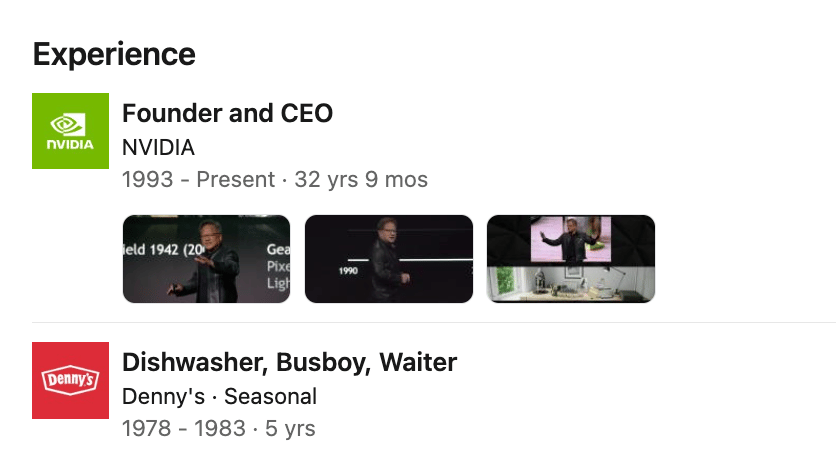
Look at this bum who used to wait at Denny’s lmao he’s going nowhere
It was honestly a pretty normal, peaceful website to showcase your skills, resume, and portfolio…
…until the Thought Leaders and Broetry Reciter came to raid the platform.

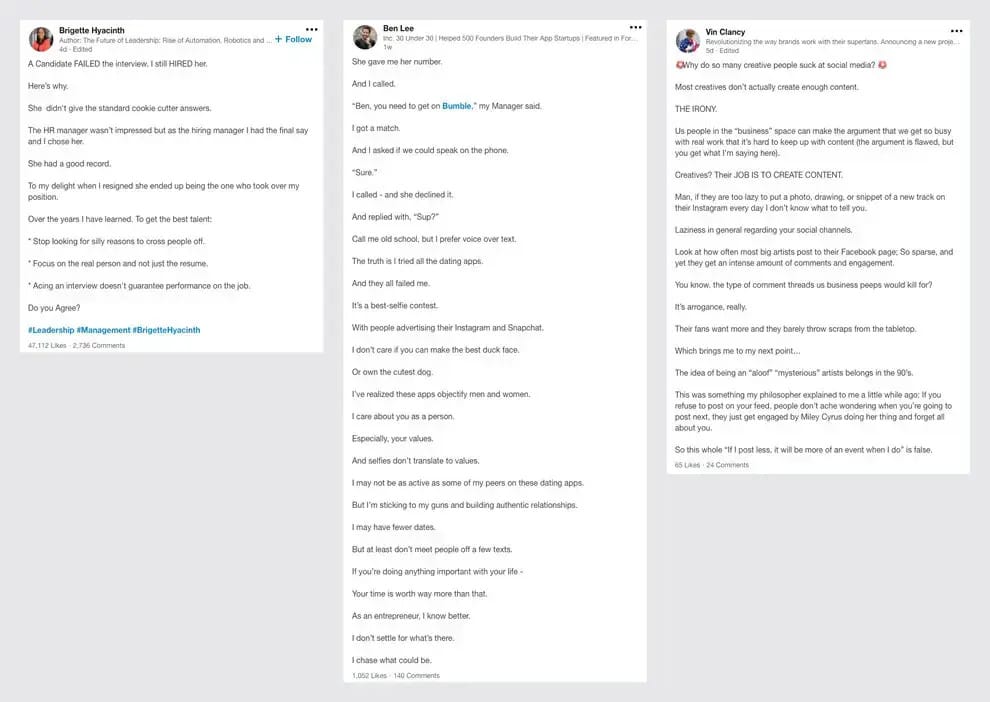
This brings me back to the dark times.
Like a Pokemon under duress, LinkedIn instantly evolved into a platform full of people who takes themselves too seriously with effort to be an influencing voice.
Now it’s even worse with ChatGPT. You see these slops more often, both as posts and replies.
It became a platform of cringe, and not even the good kind of cringe.
You know what happens when you take yourself too seriously?
Everyone sees you as a joke.
That’s why the r/LinkedInLunatics subreddit is popular. Hell, one of our popular Memelord.com account on X are the LinkedIn Lunatics.
LinkedIn is now basically a circus.
But guess who makes money in a circus?
The clown who makes you laugh.
Make them laugh, and then make them pay.

Me after posting memes on LinkedIn
All of us internet people—which is like 95% of the world—are pretty tired of doomscrolling walls of intelligence circlejerking on every platform.
People want to be entertained and see something funny. That’s why memes work REALLY well on LinkedIn.
Everyone’s sick of the thought leadership posts that basically say nothing.
At the same time, LinkedIn still carries an air of seriousness.
Tons of decision makers, hiring managers, and potential users lurk there. Having a profile signals you’re a real, credible person.
That’s why mixing in humor and entertainment works so well.
If you make memes on LinkedIn, you’ve got a winning formula:
Entertaining, engaging content
Posted by someone real and credible
Shown directly to decision makers
These decision makers then will get exposed to you and your product.
Do it long enough, they’ll remember you, and eventually they’ll buy your stuff.
Don’t believe me? Well LinkedIn is the #2 driver of sales for Memelord.com
When everyone else is trying to be serious, not taking yourself too seriously becomes your moat.
How to be a LinkedIn Lunatic
At this point you’ve agreed that being funny and entertaining on LinkedIn is a moat (if you disagree scroll back to the top and re-read until you agree).
Now let’s talk about a couple of ways you can be entertaining and get viral on LinkedIn
Satirical funny stories
Exaggerated satirical stories and posts work well on LinkedIn. People love funny fake stories. That’s why Mark Twain, The Onion, and The Babylon Bee are popular.
You can use the same formula on LinkedIn: write exaggerated, hilarious fake stories or short jokes.
LinkedIn legend Ken Cheng and PostHog CEO James Hawkins are the GOATs at this.
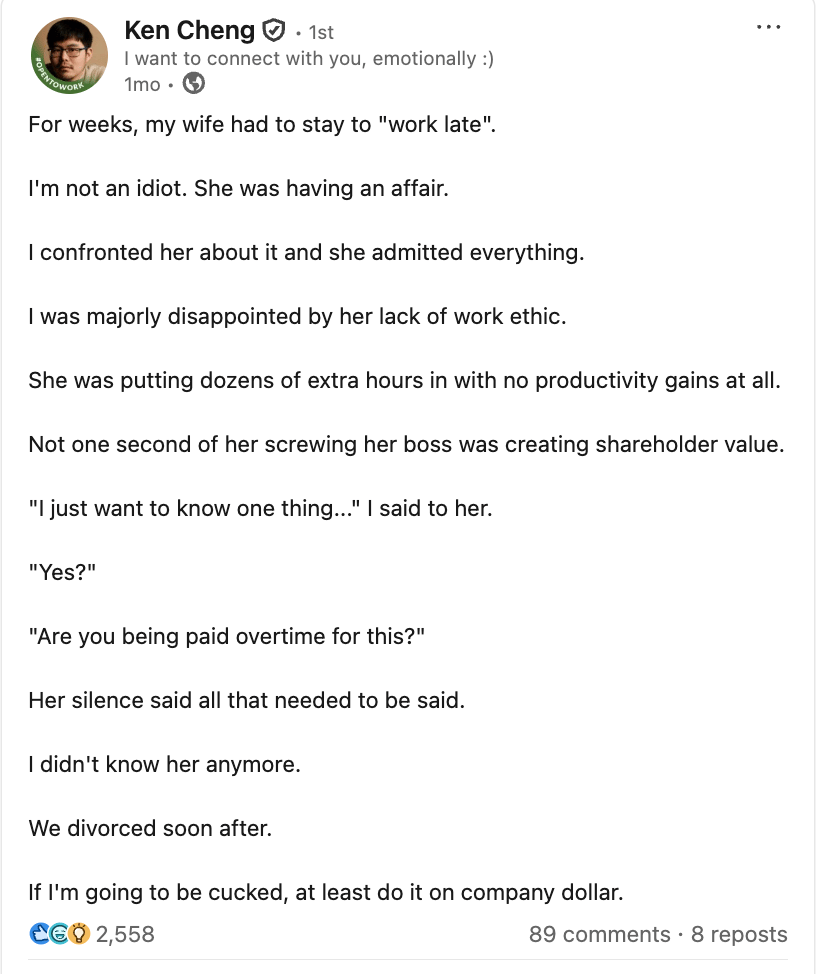
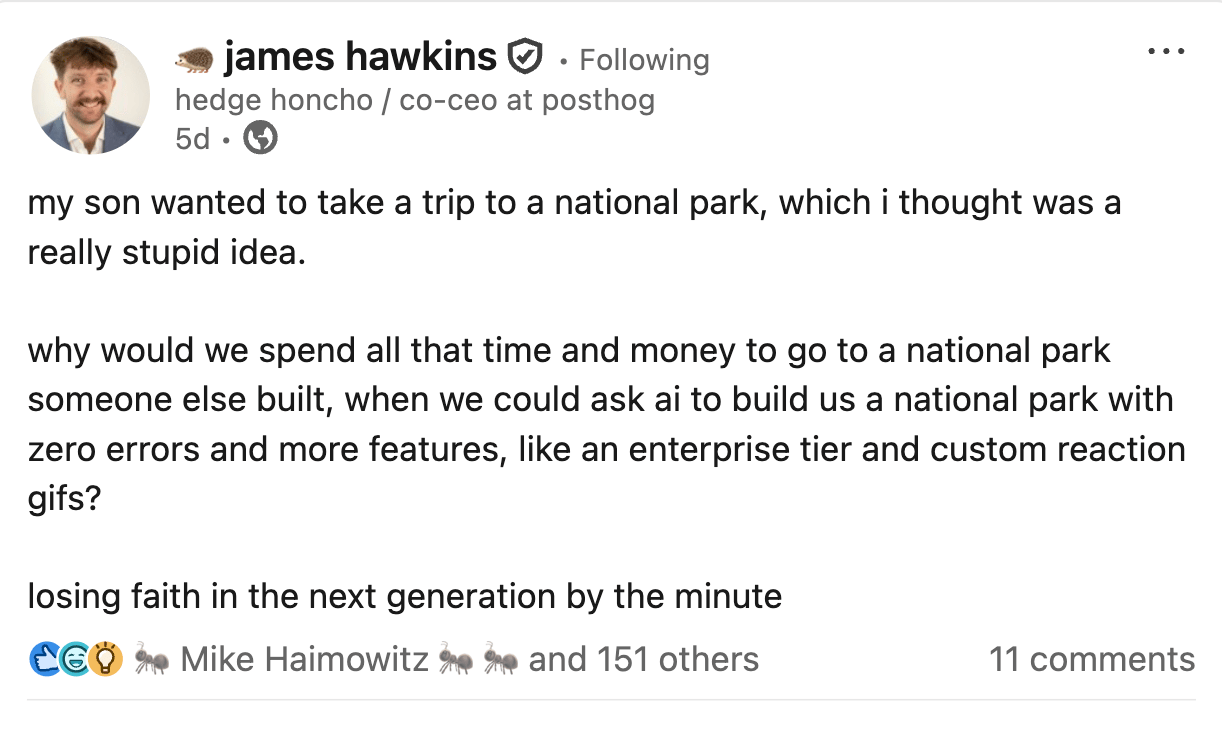
I personally had some success writing viral fake stories with ridiculous hooks, such as:
How Jason and I shit ourselves because of Taco Bell after meetings
I destroyed my laptop because my coworker didn’t want to hop on a call on Mother’s Day
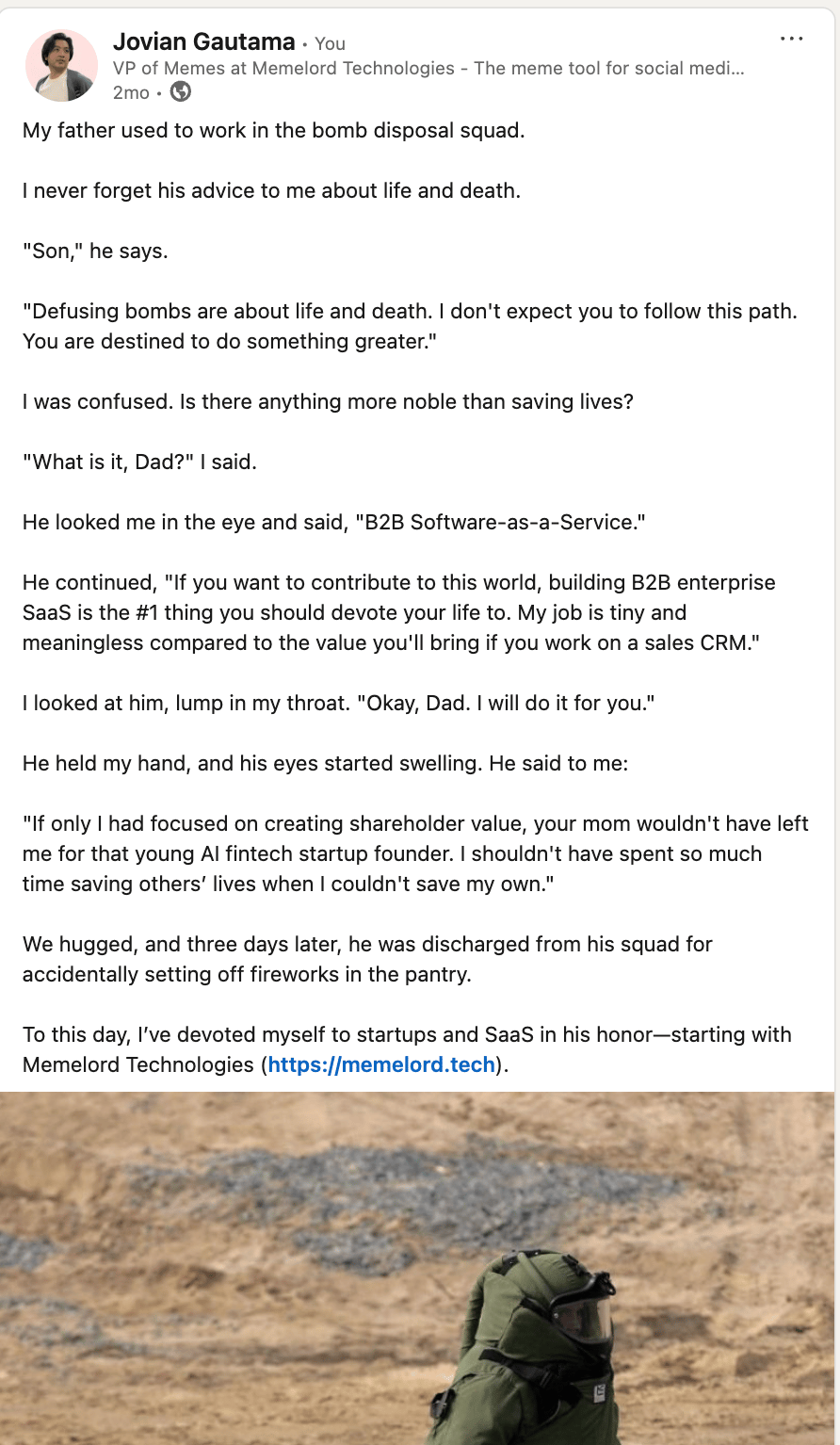
This is not Artificial Intelligence. This is Genuine Stupidity
Our friend and early Memelord.com power user Charlie Light is also one of the GOAT. He actually shared with us his process on writing satirical stories.
There are a couple of catches if you want to try this method:
First, it takes time to write.
You need to think of different hooks and angles. Every single day.
This shit can be time-consuming when you’ve got other stuff to do like actual work, walking your dog, or going on a date so your partner doesn’t divorce you for being on LinkedIn too much.
Second, you still need a visual.
There’s evidence that the LinkedIn algorithm favors posts with images, so that’s one more thing to worry about.
Even if we can’t 100% prove that’s how the algorithm works, it still makes sense to add an image. It’s just easier for people to notice a funny, eye-catching picture than a wall of text.
If you’ve already put in the time, like Ken did, you’ve probably built an audience that’s familiar with your brand—and that’s awesome.
But if you’re just starting out or struggling with consistency, satire might not be the best first step.
This is why I prefer the other alternative…
Memes baby memes
Making memes is as close as it is to a cheat code when it comes to brand building on LinkedIn
It’s fast, easy to make, and it just resonates immediately.
It’s not all shits and giggles too. You can also pair memes with serious insight.
Lovable’s Head of Growth Elena Verna has 160K+ followers and one of LinkedIn’s Top Voice.
Her strategy was just posting memes about startups, growth, and product paired with real insights.
The meme is the hook to make your audience read your ideas and opinions..
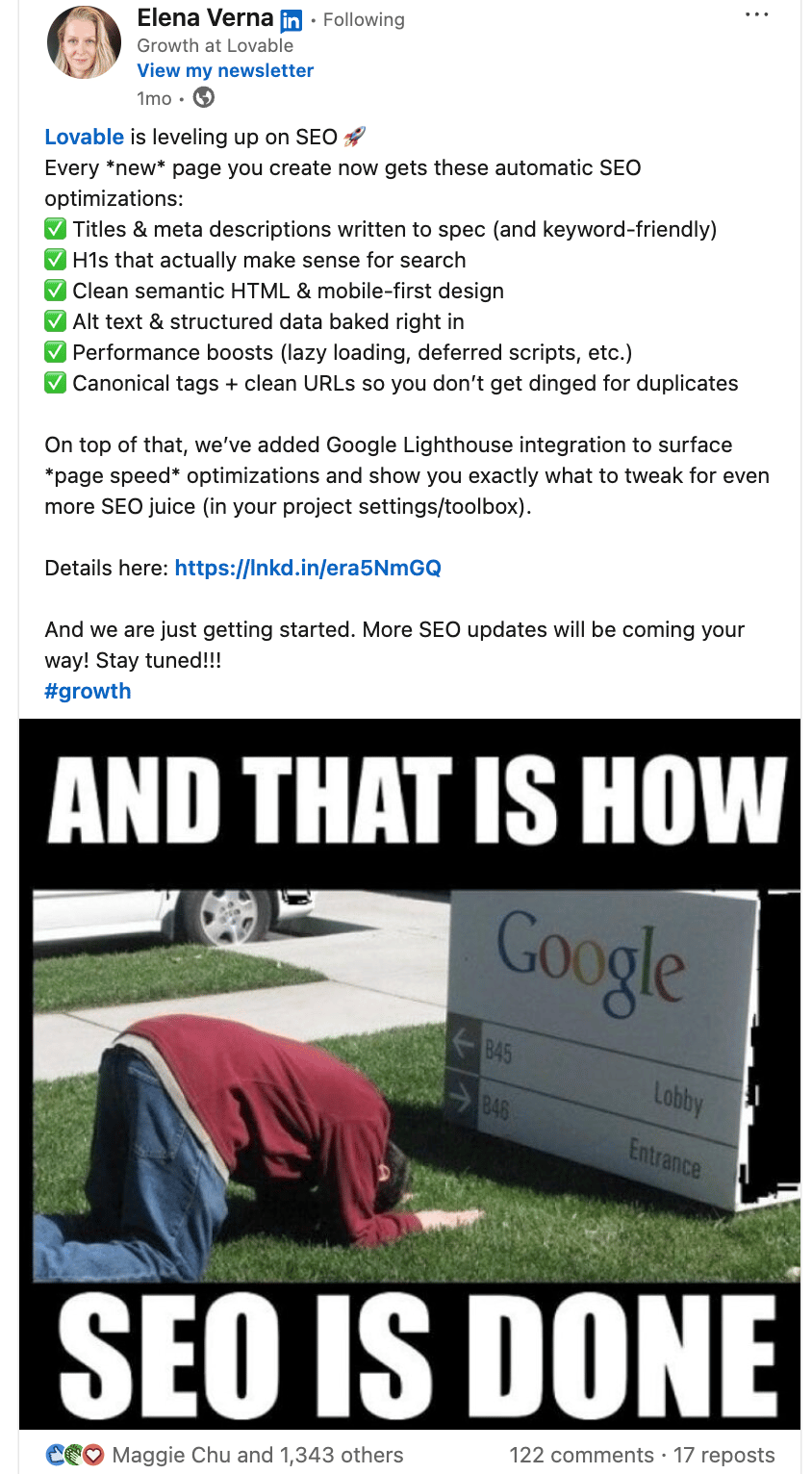
But you can literally just fuck around with posting silly memes and get tons of impressions.
That’s what I did.
My friend and an up-and-coming meme queen Leigha Henderson had 1M+ in a month impression on LinkedIn just by posting memes consistently.
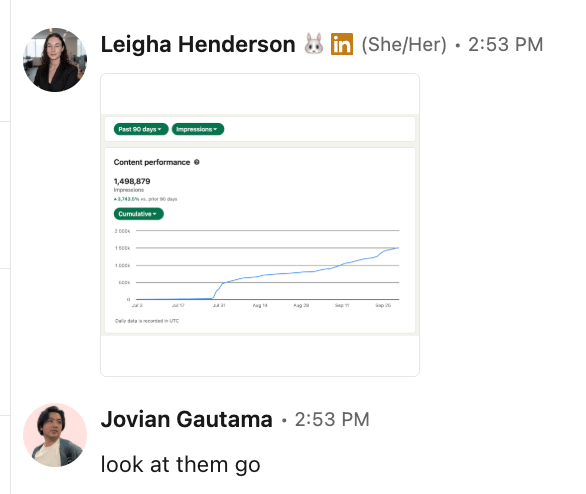
One thing people rarely mention about making memes: consistency.
Modern marketers already have a ton on their plate.
Memes are the path of least resistance to building an audience.
Grab a template, drop a caption, done.
Marketing is all about repetition and volume, and memes deliver both.
Once you’ve built that audience, then you can hit them with the serious stuff.
Insights, or even a more sales-y post about your service or product.
“But dude I’m not as funny as you”
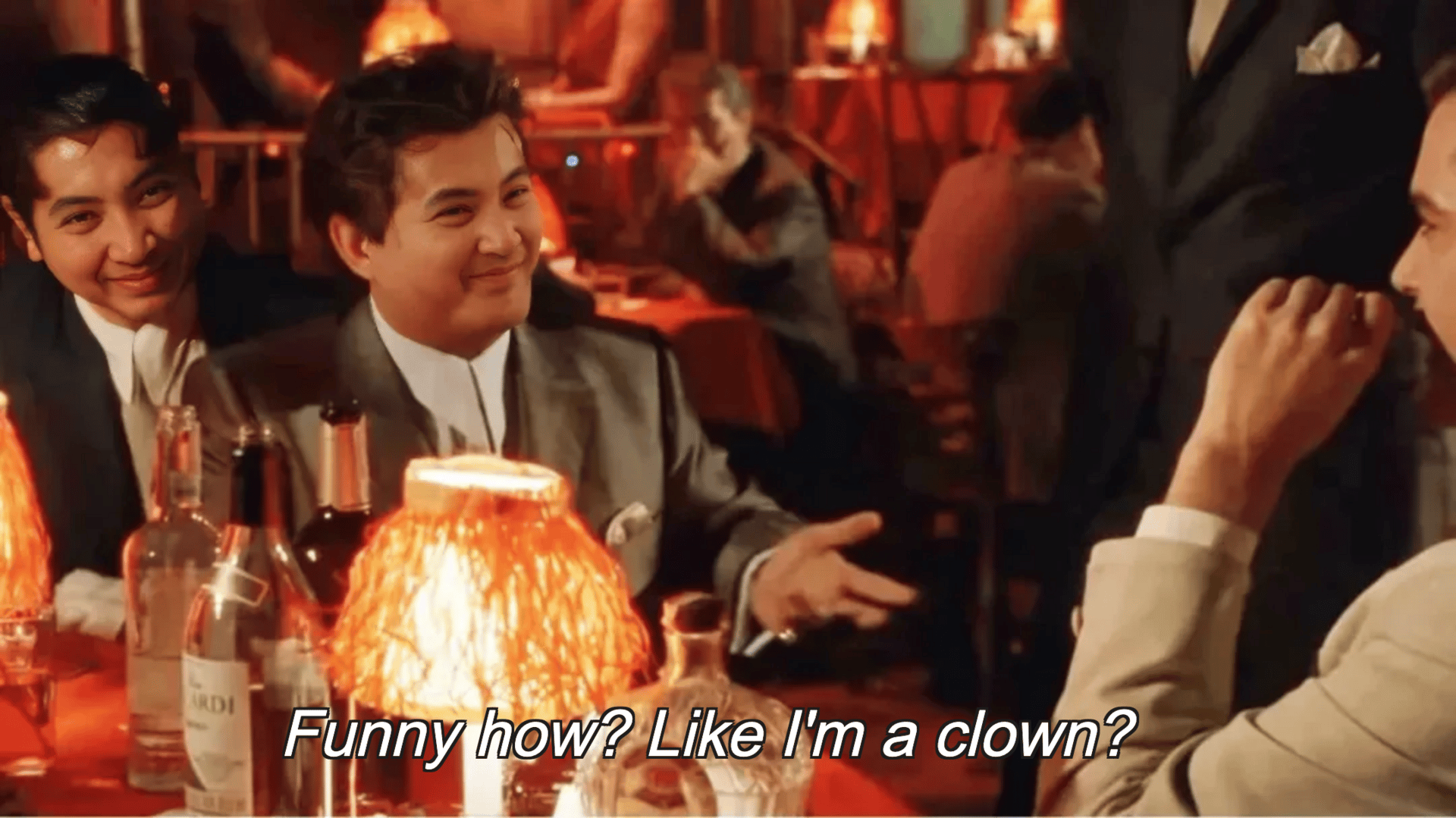
Always want to use this line in real life.
This is something I’ve heard a LOT from people whenever I talked about meme marketing.
So here’s my answer to that.
The meme already tells you HOW to be funny.
Think about it like a coloring book. The lines and shapes are already there, you just have to fill it with your preferred color, which is your insights and niche
Now, if you’re not as terminally online as I am—this is a cry for help by the way—you can use the Examples feature in Memelord to see how others use the meme.

Best case is you’re probably not as funny as me.
You’re probably funnier.
Punching up your meme with AI
Just like in comedy, you can punch up a meme with AI.
Once you get up and going with memes, more funnier, unhinged ideas will naturally come to you, and you’ll have this urge to make the memes more specific.
On Memelord.com, you can crank up your meme by using AI edit to make it more specific.
Here’s quick example. I posted this meme about LinkedIn thought leader last week. It got 320 likes so far.
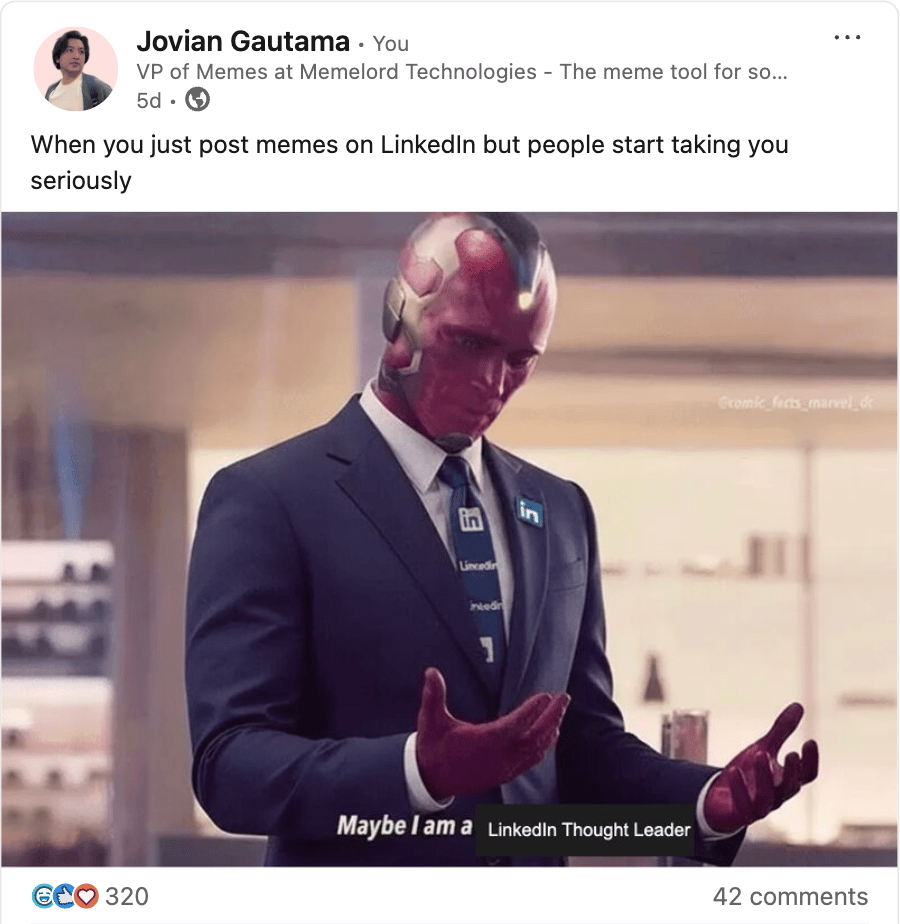
This meme is funnier than the original Vision meme, because I changed his attire into a LinkedIn branded suit.
I did this in under 1 minute with Memelord’s AI edit feature. Here’s how:
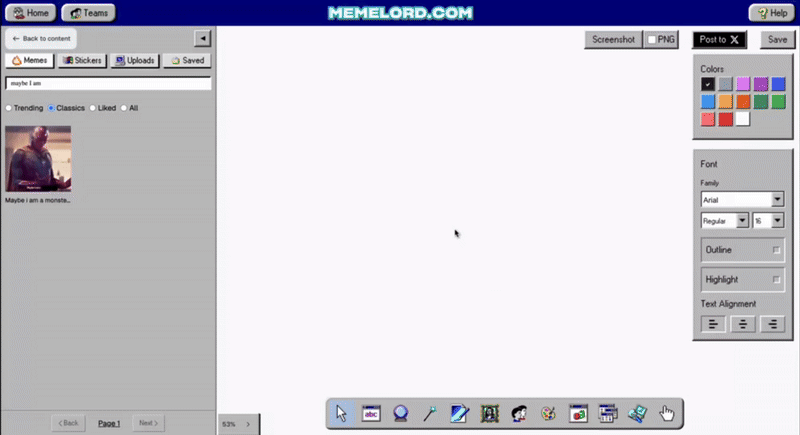
Boom boom snap snap memes!
“Hmm, I’m not buying it. You’re just talking your book because you want to promote the company you’re working at.”
Fuck yeah I 100% am.
Because I want to see a funnier internet filled with memes and humor.
You might think it’s just memes, memes, memes.
But for me, it’s about bringing creativity and play back into marketing.
The internet’s been flooded with over-optimization and shady data-driven tactics.
And what do we have to show for it? Almost two decades of ad-driven slop.
Memelord.com leans on 90s nostalgia because that’s the internet we miss.
When it was fun. When it was about entertainment.
We’re fighting to bring that back.
Starting with being a Lunatic on LinkedIn.
If you’re ready to try out meme marketing on LinkedIn, try out Memelord.com for free.
If you like this piece, I’d love to hear from you!